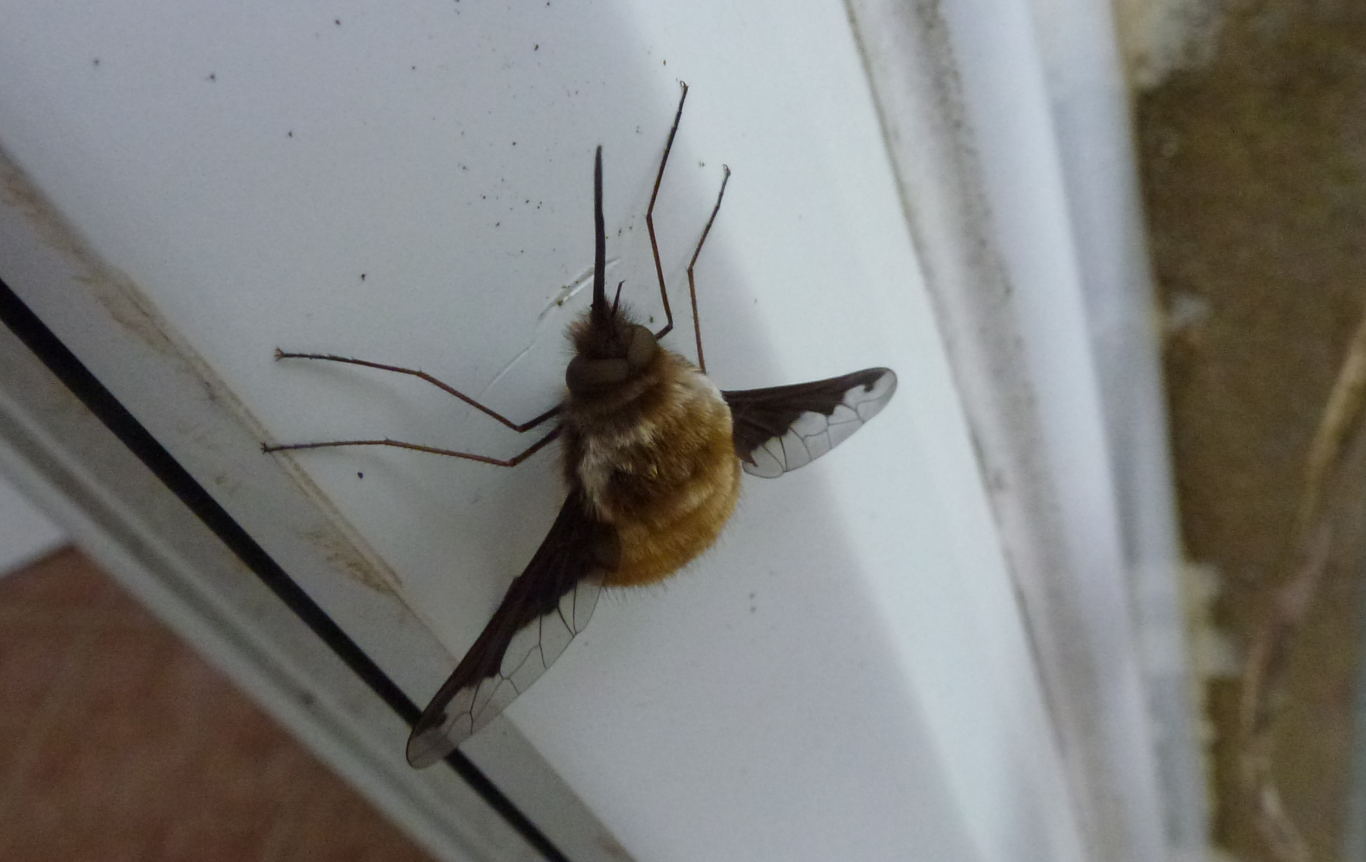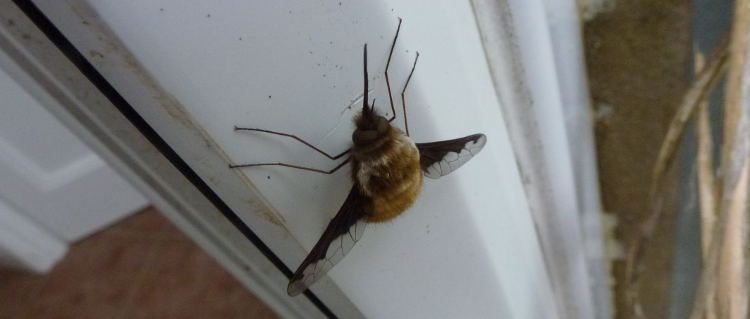This is a bee fly and, just to clear things up right from the start, it’s a fly not a bee.
Looking like a bee affords this fly some additional protection by appearing more dangerous than it actually is. This characteristic is known as Batesian mimicry and there are many examples of this evolutionary trait throughout the insect kingdom.
Catching Some Rays
Whilst bee flies like to stay close to vegetation for protection they can also often be found basking in the sun on walls, leaves or in this case on an old UPVC doorway.
This particular bee fly was photographed in March and was not scared off by us getting up close to take these pictures, this was probably due to the early time of year and low temperatures causing it to be sluggish.
Despite its somewhat sinister appearance the bee fly is actually vegetarian during its adult life using its long pointy nose spike to drink nectar from flowers rather than as an offensive weapon. Bee flies do not bite or sting, they’re completely harmless*.
*Completely harmless unless you happen to be a solitary bee or wasp larvae…
Bee Fly Reproduction
The bee fly lays its eggs in or near other insect nests and the larvae that emerge make there way into the heart of their victims nest to consume the larvae of the unfortunate target.
Ground dwelling solitary bees and wasps are a common target and bee flies are known to drop their eggs whilst in flight aiming for the nest entrance of their chosen hosts.
Once the bee fly larvae have consumed their victims they then remain in the nest over winter as a pupae and emerge as an adult in early spring.
Bee by Name, Bee by Nature
They may have a parasitic element to their life cycle but during their adult phase they play an important role as a pollinator just like the bees they have evolved to resemble. We haven’t witnessed it yet but bee flies apparently use their long legs to stabilise themselves whilst hovering over the flowers from which they feed giving them an almost hummingbird like appearance.
So if you see a bee fly in your house, don’t be alarmed, don’t reach for the fly swat, let it back outside to pollinate your garden.


Had the pleasure of finding one on my jumper sleeve today .could not wait to look it up.so pleased I did .I saw a hummingbird bird hawk moth in Cyprus absolutely beautiful it was feeding on verbena at the time ,wonderful nature
We have lived here, near Biggar in Scotland for 35 years & saw a bee fly for the first time, in our garden on 16 April 2021. We are 66 years old and have never come across the species before.
In the previous two years however we have observed Asian Hornets here.
We’ve had one of these hanging out on our back porch and he seems to like to say hello to our security cameras. Today he landed on me and freaked me out so I looked it up. I think I will name him Fred and he is now a part of our garden friends.
I found one in the garden yesterday. So glad I googled it. It was stunning. Never seen one before.
Saw one of these yesterday in the garden feeding on Verbena …Didn’t know what it was so looked it up ,thank you!
Grange over Sands area..
awhhh!! thats so cute! hope this friendship lasts for a while!!
Two very large ones with white spots on abdomen in my garden in Essex today, never ever seen these before !
Chilling by the pool in Greece today, around mid day and had the biggest shock of my life when one landed on my towel I seriously thought it was dangerous … but now I know it’s harmless I kinda want it to come back so I can get a picture 🙂